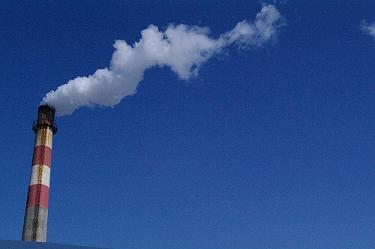The federal government released this year’s greenhouse gas inventory report on April 11.
Environment Minister Peter Kent insists this is a good news story, that Canada’s 692 megatonnes of greenhouse gas emissions in 2010 being down from 731 in 2005 demonstrates Canada is on track to de-coupling emissions growth from economic growth.
As quoted in the Toronto Star, “While our continued economic recovery remains our government’s top priority, today’s news demonstrates that our work to balance the need for a cleaner and healthier environment while protecting jobs and growth is working…”
Right. Thankfully some media coverage of the release is looking past this rosy take on the report.
Further on, the Star article recognizes, “Environment Canada says even if all the government’s actions are taken into account, and all the provinces’ actions are factored in, Canada will only get a quarter of the way to meeting its 2020 goal [emission reduction target].”
Canada’s emission reduction target is 17 per cent from 2005 levels by 2020. This amounts to a 2.5 increase above 1990 levels (what most countries use as a baseline comparison) by 2020. The last Intergovernmental Panel on Climate Change report (2007) called for Global North countries to take on 25-40 per cent cuts below 1990 levels by 2020, while more recent evidence suggests the higher end of these cuts and beyond is needed.
Kent is also taking credit where it is not due. The report highlights that Ontario has made significant strides in reducing electricity sector emissions through the phase out of coal-fired power — emissions dropped 15 MT (43 per cent) between 2005 and 2010. Kent isn’t taking credit for irresponsibly allowing tar sands emissions to continue to grow, counteracting the provincial efforts that are actually reducing emissions (see this CBC story). As Keith Stewart of Greenpeace Canada states, “It isn’t fair that good work, like Ontario’s efforts to phase out coal, should be undone by a no-limits approach to expanding tar sands production.” (Globe and Mail article). For more information on a breakdown on how provinces are contributing to emissions, check out a new report by the David Suzuki Foundation.
The report also affirms that the previous pattern of reducing the emission intensity per barrel in the tar sands has reversed. The much-touted per-barrel emissions drop of 29 per cent was dropped to 26 per cent, recognizing that the intensity went up by 2 per cent between 2009-2010. This is because of the increasing shift to in-situ mining which is more greenhouse gas emissions intensive.
In other words, not only will be see overall tar sands emissions go up because of rapid expansion, the emissions being generated by the use of in situ mining will also see emission levels per barrel rise.
Now — square this so-called “good news story” with the Scientific American article from late last month warning that the world is close to reaching a tipping point for addressing climate change, beyond which the world will be irreversibly hotter. “Scientific estimates differ but the world’s temperature looks set to rise by six degrees Celsius by 2100 if greenhouse gas emissions are allowed to rise uncontrollably. As emissions grow, scientists say the world is close to reaching thresholds beyond which the effects on the global climate will be irreversible, such as the melting of polar ice sheets and loss of rainforests.” This is the critical decade. If we don’t get the curves turned around this decade we will cross those lines,” said Will Steffen, executive director of the Australian National University’s climate change institute, speaking at a conference in London.”
Yikes. While there remains many opportunities to reduce emissions in our communities, provincially and nationally — yes, even some that will generate jobs and improve lives — we do have our work cut out for us in stopping government-backed projects like the Enbridge Northern Gateway pipeline and the irresponsible expansion in the tar sands, and creating the political space for change.




